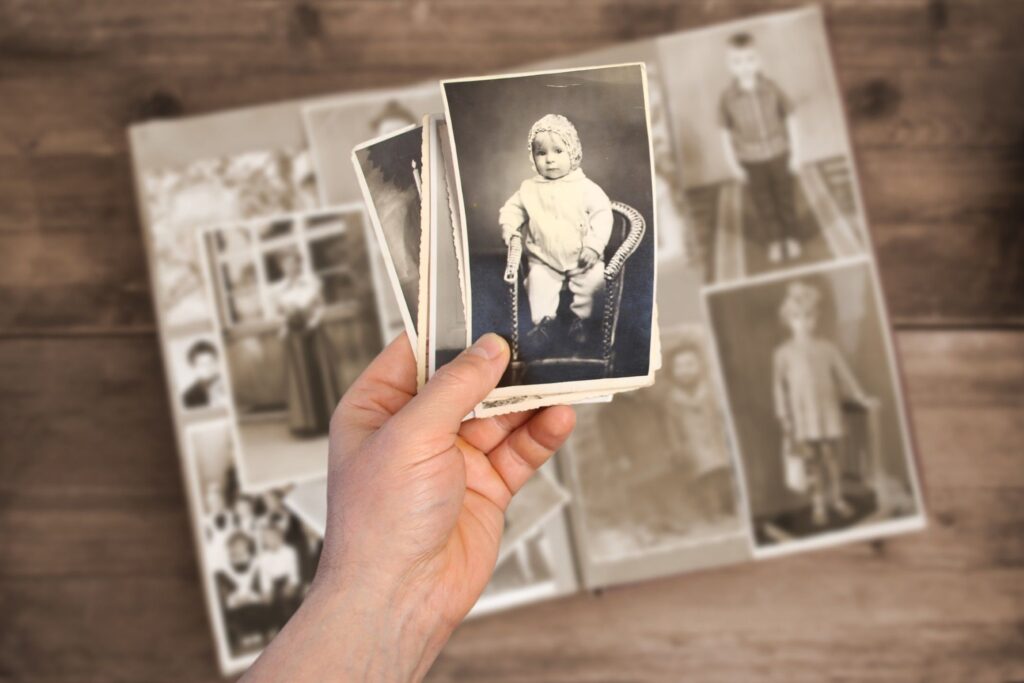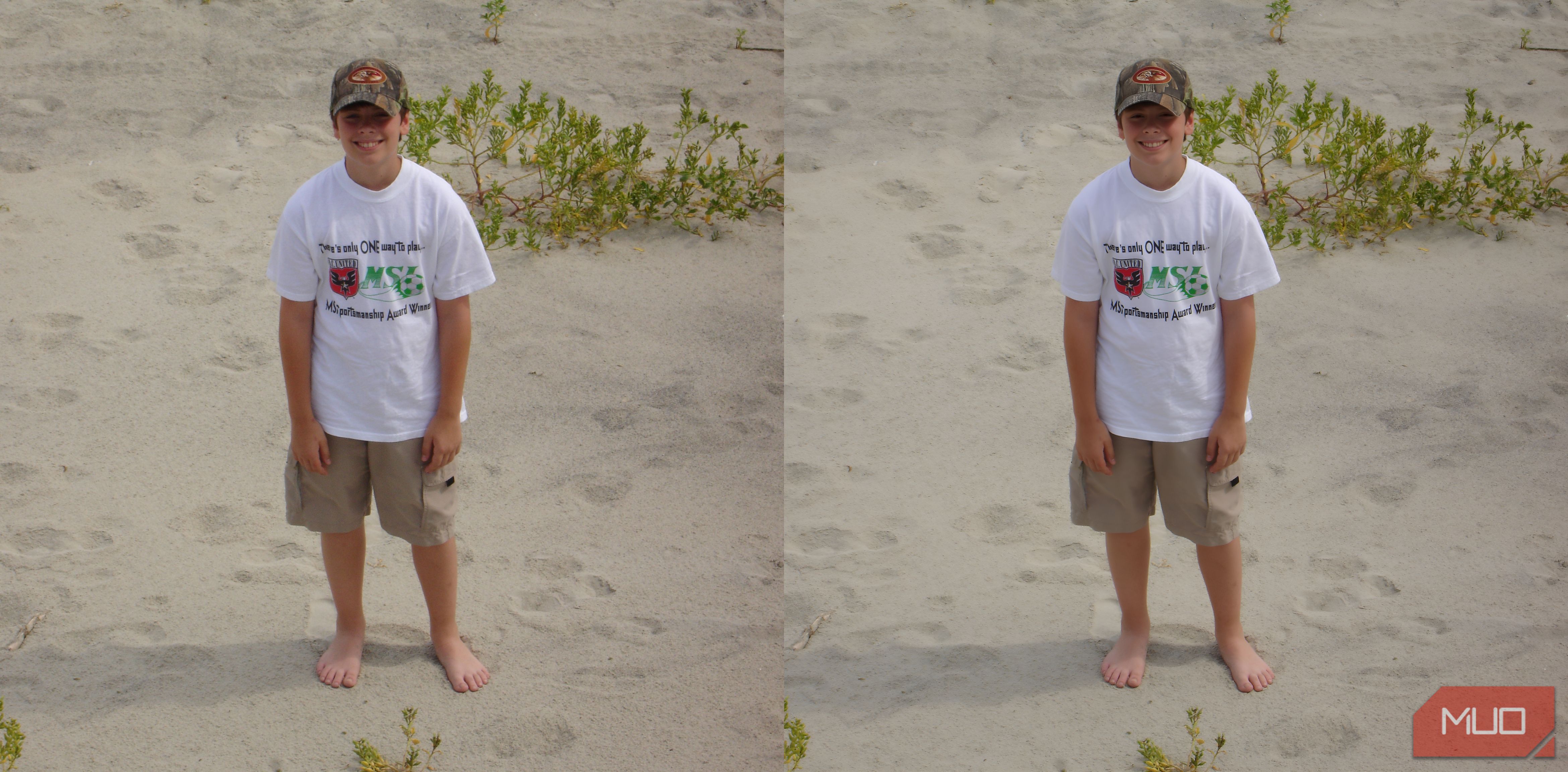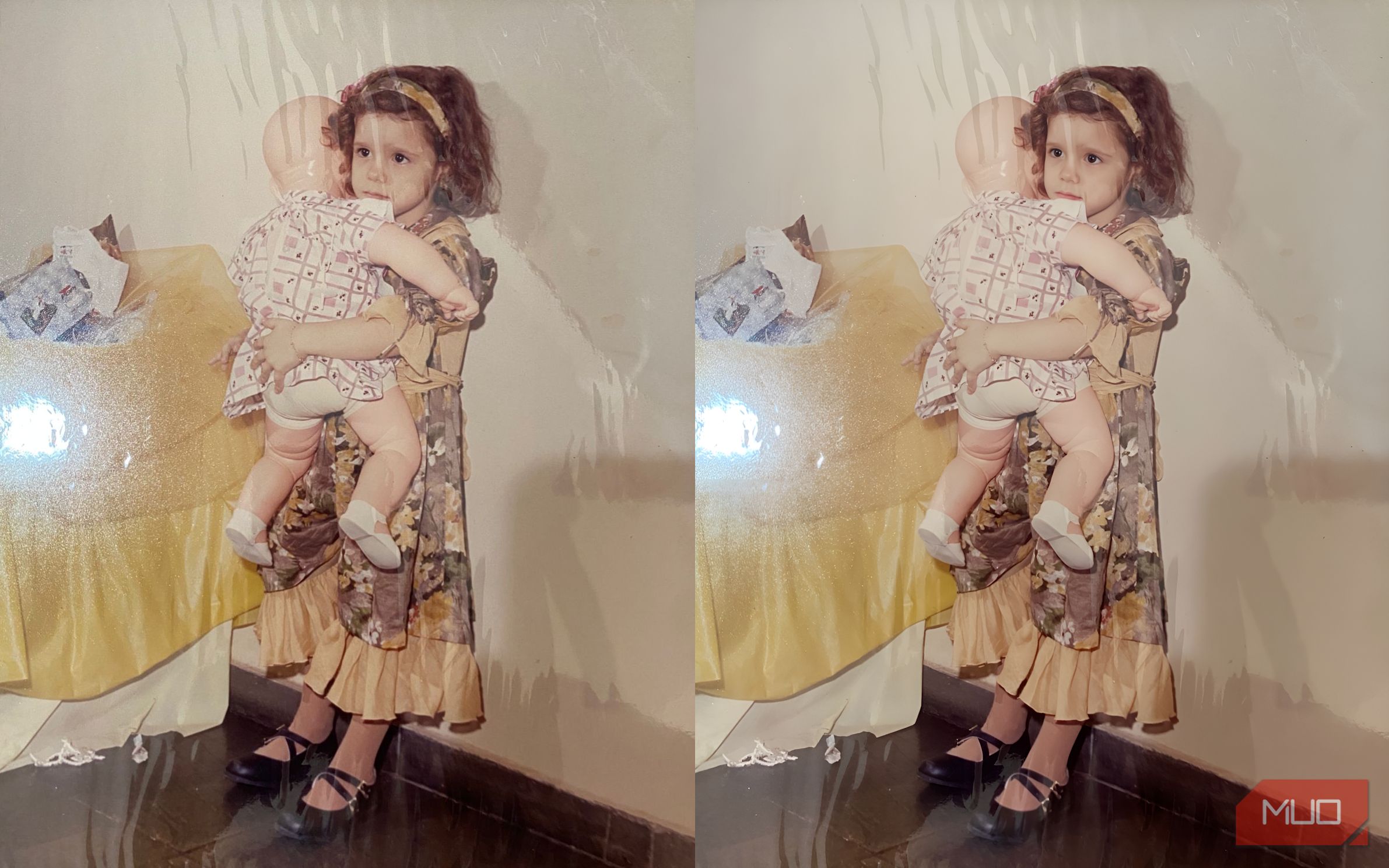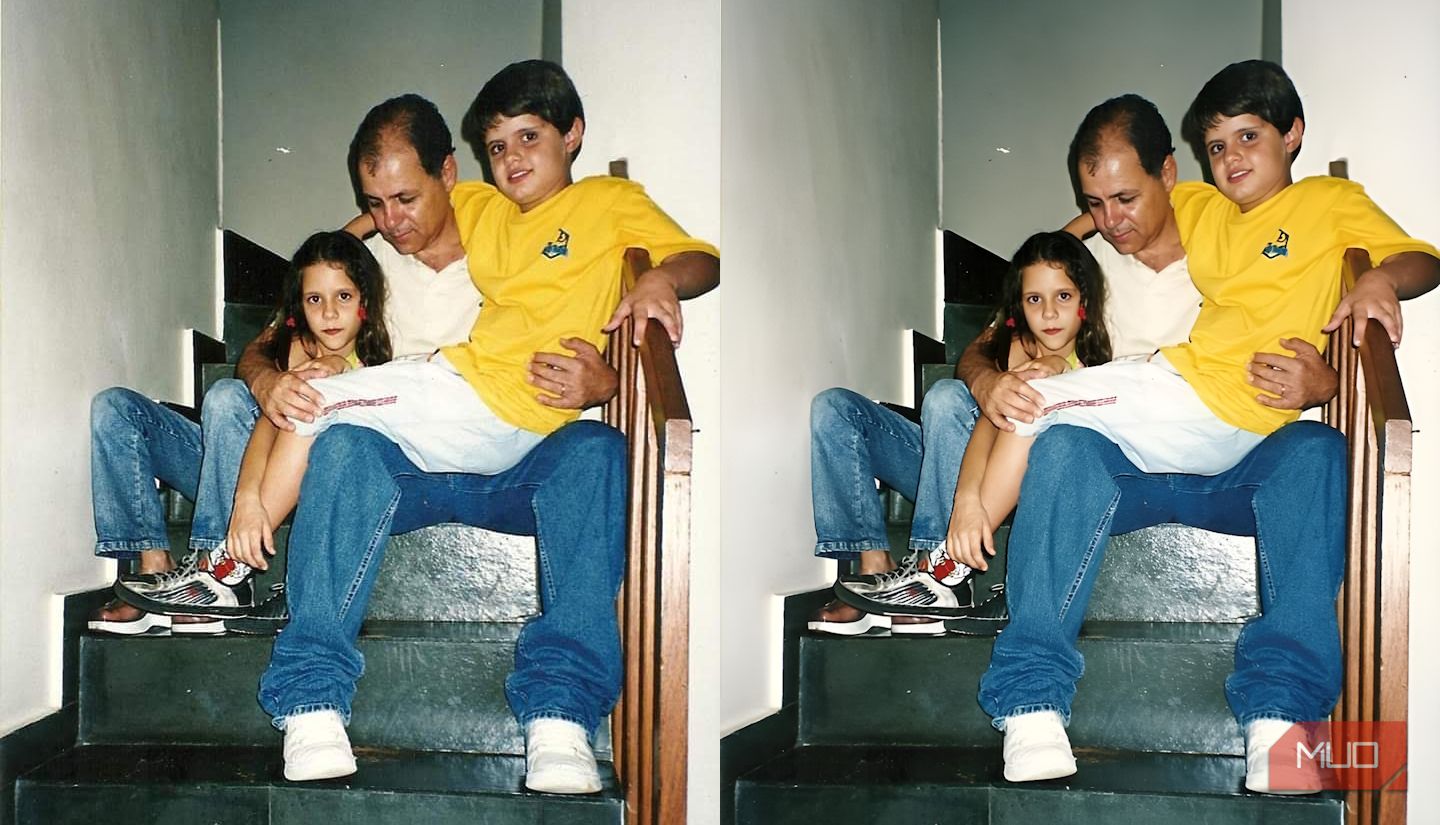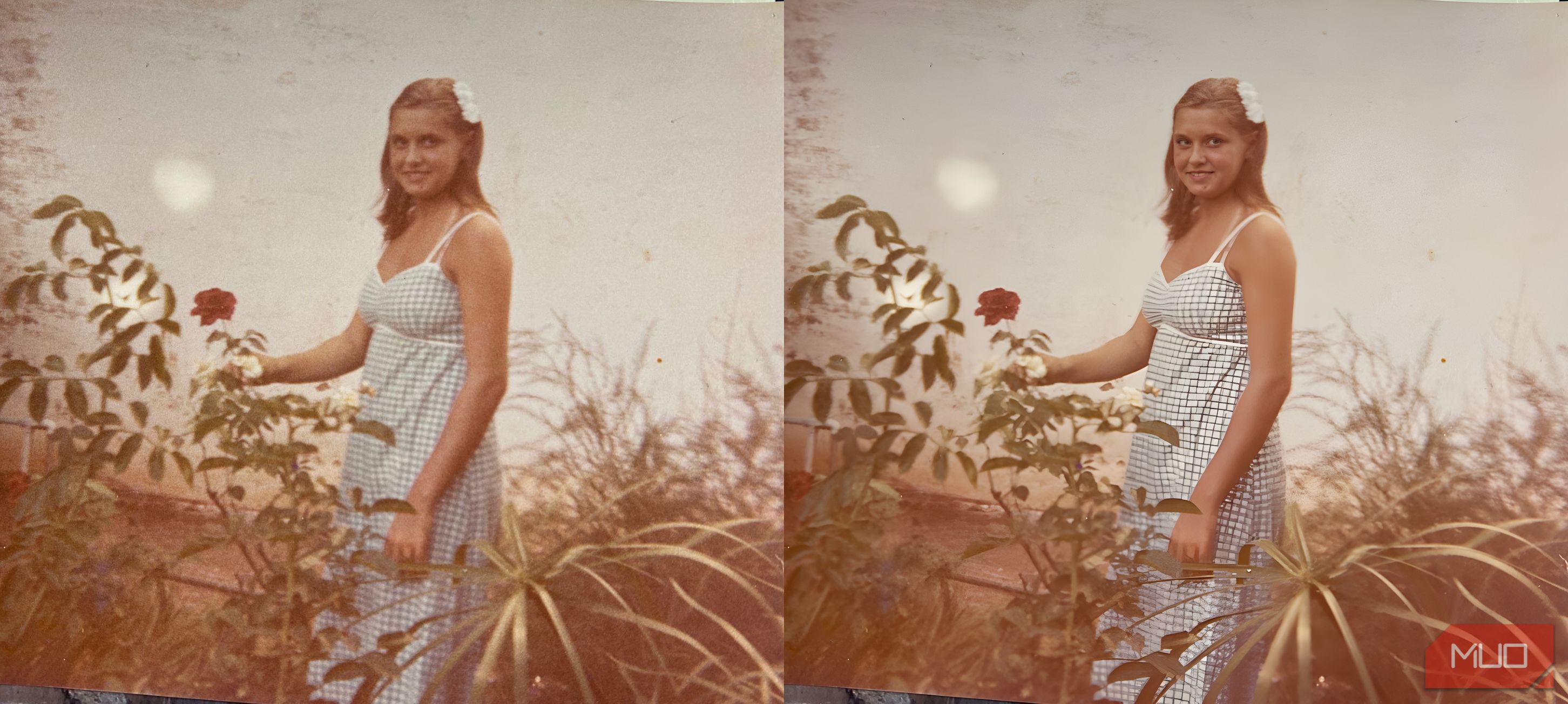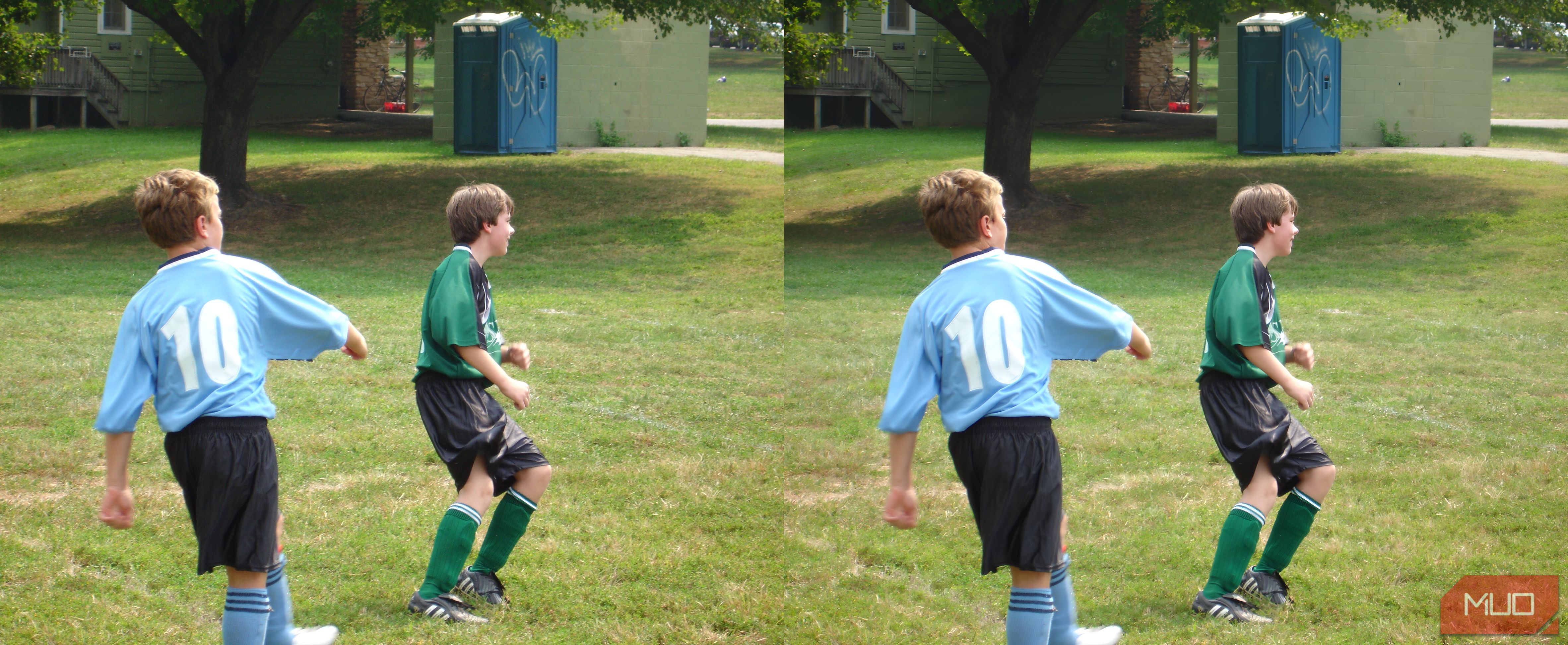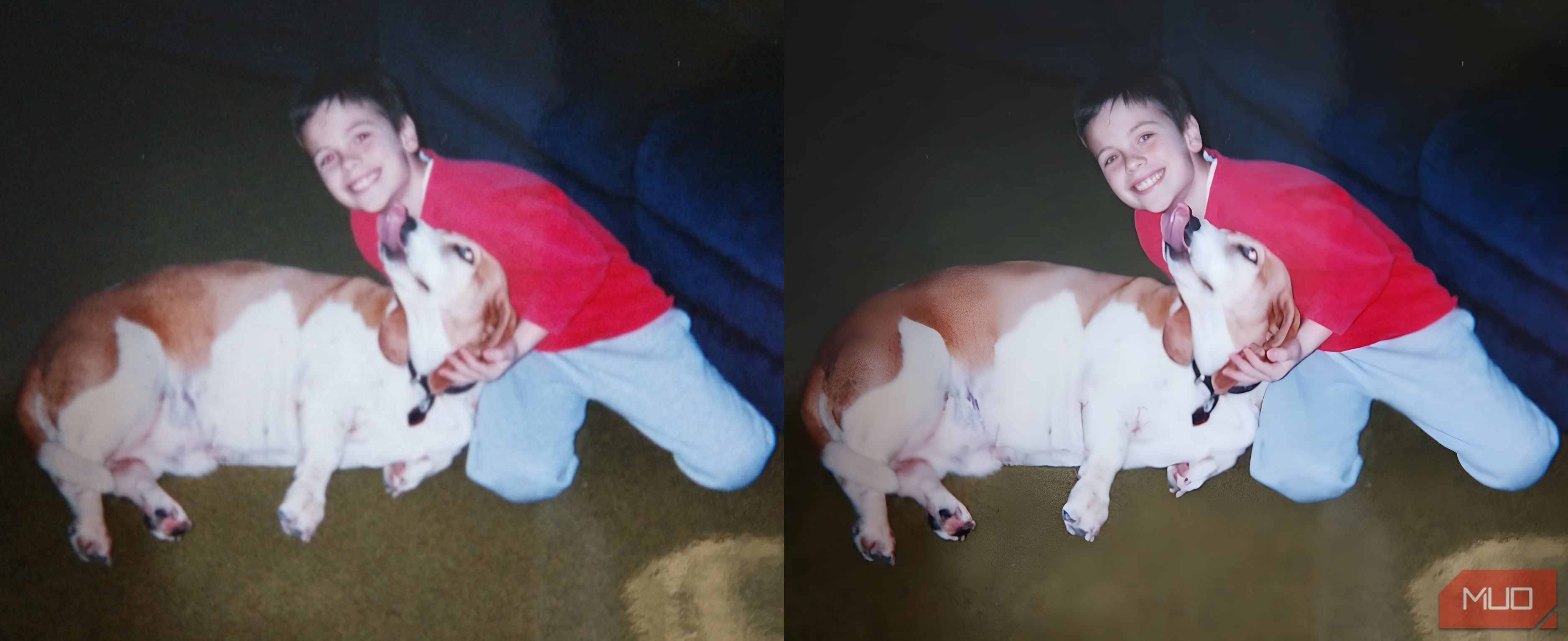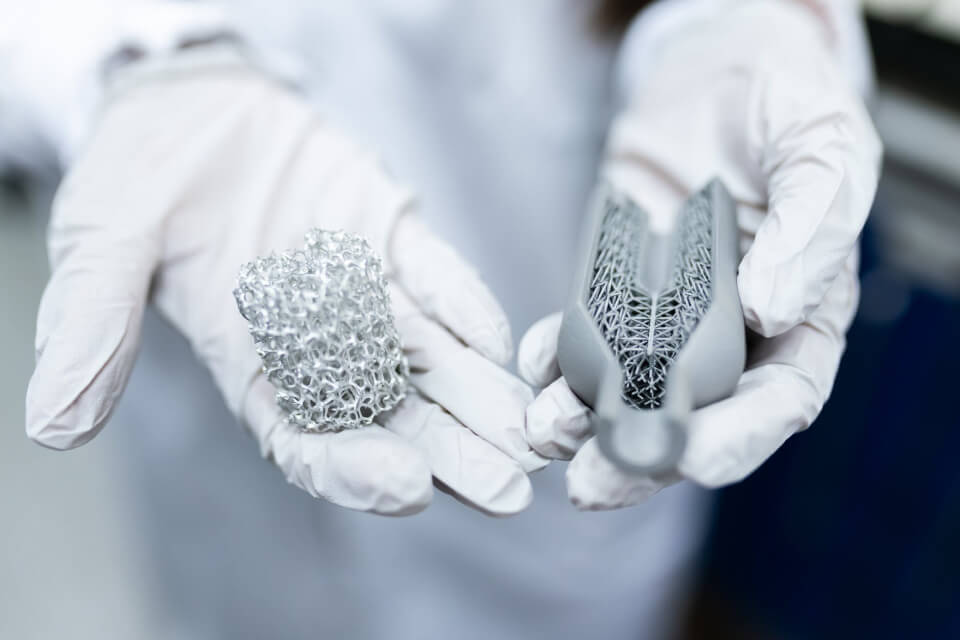Old childhood photos are more than images; they’re glimpses into the past, capturing moments that would otherwise fade away. Curious about AI’s ability to restore these memories, I decided to test it out using Picsart. The results were, to say the least, mixed.
The Promise of AI Photo Restoration
We’ve all seen the automatic AI photo enhancement tools that seem almost too good to be true. The idea is simple: Upload an old, low-res photo, and let AI breathe new life into it by improving the resolution, enhancing features, and fixing imperfections. With a collection of a few old family photos, I figured it was worth a shot.
The real experience, however, doesn’t always line up with the marketing. Still, I couldn’t help but be curious. So I picked out a few antiquated pictures and uploaded them to Picsart. I was eager to see how well this technology could transform the old, blurry memories into something crisp and vivid again.
The original photos are on the left, with the AI edits on the right.
The Good: AI Truly Does Improve Image Quality
The first thing I noticed when Picsart’s AI started working on my photos was how much sharper they became. One of the standout examples was a picture of me standing on the sand at the beach. The textures were clean, and the details became clear. The overall effect felt seamless, with most aspects coming together very well.
My face and the landscape behind me looked as though they’d been photographed recently—an impressive feat for an old photo. It truly felt like a moment preserved in time, enhanced but still fairly authentic.
Another great result was the photo of my family member holding a doll. This one turned out quite well overall. The doll and the background looked sharper, and her face was smoother. The tool focused primarily on improving her eyes above all other aspects of the photo, but the rest of the image maintained a good balance.
While that one detail had a slightly unrealistic polish, it didn’t detract too much from the overall feel of the photo.
The picture of my family members sitting on the stairs was another solid result. The enhancement improved their overall clarity without any disruptively unnatural changes. The photo seemed to maintain its vintage feel but with a slight upgrade. However, as with the previous photo, the faces were a bit too smooth. They looked a tad less natural than in the original, but the photo certainly wasn’t ruined.
This is where Picsart’s AI restoration truly shines. The process is quick and efficient, and if all you need is to make a faded memory clearer, it does the job. The clarity was enhanced, the sharpness improved, and the grainy texture that often comes with old photos was noticeably reduced.
For anyone looking to preserve memories and improve the overall quality of their old photos, Picsart’s AI-powered tools are worth exploring.
The Bad: AI Focuses on Faces, Not Entire Images
Unsurprisingly, one-click AI enhancers also come with drawbacks. One of the main issues I encountered was that the AI restoration process seemed to target mainly the faces and primary subjects of the photo, ignoring many other parts of the image.
This issue was evident in the photo of my other family member standing in a garden. While her face became the clear focal point of the enhancement, everything else—like the flowers and greenery—wasn’t enhanced nearly as much.
The AI appeared to focus primarily on her eyes, giving them a striking clarity, but the lack of consistency across the rest of the photo made it feel very uneven. Additionally, the lines, creases, and shadows in her dress became completely off-kilter. Some areas were lightened too much, while others were significantly darkened.
On the flip side, one of my pictures from a soccer game, which was already a decent shot, didn’t see much improvement. The AI didn’t add any significant enhancements to the image.
In a way, this could be seen as a positive—sometimes it’s better to leave a good image untouched—but in the context of using AI to enhance, I expected to see a bit more transformation. The lack of change here made me question whether the AI can effectively improve photos that are already in fairly good condition.
The Ugly: Simply Too Artificial
One thing that stood out in my experience with Picsart’s AI-powered photo restoration was how some aspects of photos became distorted and unnatural. When I restored a photo of me and my dog, I was struck by how disfigured she looked. While my appearance turned out clear and precise, my dog turned into an anamorphic mess.
The AI seemingly contorted and flattened her features in an attempt to enhance the photo, giving her a clay-like appearance. My dog, once a familiar companion in the photo, became completely unrecognizable in a way that felt uncomfortable and somewhat comical.
This transformation went beyond subtle enhancement and veered into the surreal, turning a cherished memory into something strange and artificial. The results made me realize that sometimes, the AI can go too far, causing textures to change so drastically that the picture looks more like an oil painting than a photo.
While I understood that AI would smooth imperfections out to some degree, the results weren’t always natural. Instead of capturing the soft, cozy look that made the photo feel like a memory, the AI gave it a flat, distorted appearance. It was as though the photo was trying to be something it wasn’t, sacrificing the authenticity of the moment for an over-enhanced look.

Related
How to Take Your Photos From Okay to Great Using AI
With AI finding its way into nearly every photo editing app these days, it’s easier than ever to achieve professional-looking photos.
AI-powered upscaling tools are more than capable of restoring old photos, but they’re not without their imperfections. With all the synthetic polish and distortion, it’s clear there’s still room for growth. If you want a fully authentic result, you might need to tweak the image manually or use more advanced AI enhancement tools.
But if you’re open to a little artificial shine and selective enhancement, AI can certainly breathe new life into old, faded memories.

